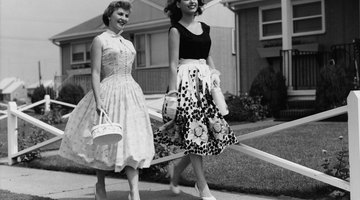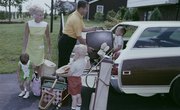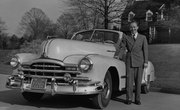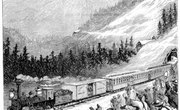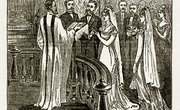A period that evokes happy homemakers and suburban subdivisions with manicured green lawns, the 1950s was, in fact, a tumultuous era for women. Powerful post-World War II propaganda, such as persuasive advertising campaigns, encouraged women to seek husbands, settle down and have babies. Despite strong efforts to keep women in the home, however, the 1950s was a time when a small number of women began to seek higher education and women's rights groups sought equal rights for working women.
Family Life
Media representations of family life in the 1950s almost always included a woman -- a mother and wife -- at the center. Informed by such television shows as "I Love Lucy" and "Leave it to Beaver," the 1950s was a time when women were expected to spend their lives raising a family. And for 1950s women this was more than an expectation, it was often a reality. Following the end of World War II, women left the workforce that the war had opened to them -- a workforce again dominated by the men who had returned from war -- and returned to the home, where their responsibilities were largely domestic.
Education
During the 1950s, women who enrolled in higher education often did so in order to improve their domestic skills and to find husbands -- "seeking an M.R.S. degree" was the popular expression. What is less known about women's education in the 1950s is that female scholars began to emerge, slowly and under immense discrimination, to claim their place as college professors and college department chairpersons. Still, according to the New York Times, many women who became academics during the 1950s began their college careers for the same reason other women did -- to get married.
Women in the Workplace
Though domesticity seemed to be the most suitable situation for 1950s women, during the decade women began returning to work, filling jobs traditionally considered appropriate for females. The majority of employed women were single and did jobs such as nursing, teaching and typing. In 1950, 29 percent of the American workforce was female, and that share increased through the decade. Half the female workforce was over 35 years old, but 40 percent of married women with small children also held a job. A shortage of employees for women's jobs in the early 1950s prompted the government to create programs to train women to fill these positions.
Feminism
With women returning to the workforce after being ousted at the end of World War II, and some women looking for academic opportunities that had little or nothing to do with finding a husband, the 1950s saw the rise of feminist efforts to aid women find equal footing. Women's rights organizations began seeking equal pay for women, and women's magazines such as the Ladies' Home Journal and the Women's Home Companion encouraged women to take part in politics and political action. Although feminism in the 50s was shaped by Simone de Beauvoir's 1949 analysis "The Second Sex," it was not until the early 1960s that women such as Betty Friedan, author of "The Feminine Mystique," began to draw attention to the dissatisfactions of domesticity.
Related Articles
References
Resources
Writer Bio
Kristyn Hammond has been teaching freshman college composition at the university level since 2010. She has experience teaching developmental writing, freshman composition, and freshman composition and research. She currently resides in Central Texas where she works for a small university in the Texas A&M system of schools.

